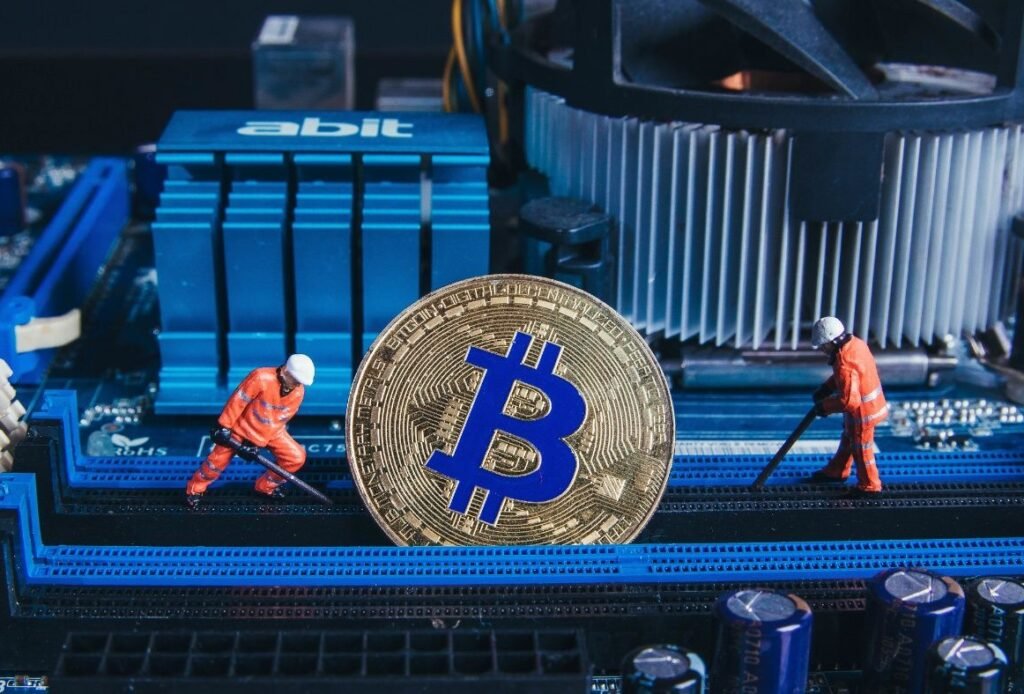The cryptocurrency mining landscape has evolved dramatically, and finding the best Bitcoin mining hardware in 2025 is crucial for maximizing your mining profitability. With Bitcoin’s price reaching new heights and mining difficulty increasing, choosing the proper hardware can make the difference between profit and loss. Modern ASIC miners deliver unprecedented hash rates while maintaining energy efficiency; however, selecting the optimal mining rig requires careful consideration of factors such as initial investment, electricity costs, and expected returns. Whether you’re a seasoned miner or just starting your journey, understanding the current market leaders in mining hardware will help you make informed decisions that align with your budget and profit goals.
Why Choosing the Right Mining Hardware Matters in 2025
The Bitcoin network’s increasing difficulty, combined with the recent halving event, has transformed the mining ecosystem. Today’s miners face intense competition, making hardware selection more critical than ever. The best bitcoin mining hardware 2025 delivers superior hash rates, energy efficiency, and long-term durability to ensure sustained profitability.
Modern mining operations require equipment that can adapt to changing market conditions while maintaining consistent performance. The right hardware investment can determine whether your mining venture succeeds or fails in today’s competitive environment.
Current Market Conditions Affecting Hardware Choice
Bitcoin’s market volatility directly impacts mining profitability, making it essential to choose hardware that remains profitable even during price fluctuations. The 2024 halving reduced block rewards to 3.125 BTC, increasing the importance of efficient mining equipment.
Energy costs continue to rise globally, prompting miners to adopt more efficient ASIC miners that deliver higher hash watts per watt consumption. Environmental regulations are also influencing hardware design, with manufacturers focusing on sustainable mining solutions.
Top Bitcoin Mining Hardware for 2025

Bitmain Antminer S21e XP Hyd 3U
The Bitmain Antminer S21e XP Hyd 3U stands out as one of the most powerful miners available, delivering an impressive 860 TH/s hash rate while consuming 11,180W of power. This hydro-cooled unit operates at just 13 J/TH efficiency, making it highly competitive for large-scale operations.
Key Specifications:
- Hash Rate: 860 TH/s
- Power Consumption: 11,180W
- Energy Efficiency: 13 J/TH
- Cooling: Hydro cooling technology
- Noise Level: 50dB
- Price Range: $17,000+
The hydro cooling system significantly reduces noise levels compared to traditional air-cooled miners, making it suitable for facilities with noise restrictions. Despite the high initial investment, the superior efficiency and hash rate provide excellent long-term ROI potential.
Auradine Teraflux AH3880
Released in March 2025, the Auradine Teraflux AH3880 represents cutting-edge mining technology, boasting a 600 TH/s hash rate and 8,700W power consumption—the 14.5 J/TH efficiency rating positions it as a strong competitor in the high-performance category.
Performance Highlights:
- Hash Rate: 600 TH/s
- Power Consumption: 8,700W
- Energy Efficiency: 14.5 J/TH
- Noise Level: 35dB
- Advanced cooling system
The remarkably low 35dB noise level makes this miner ideal for home mining operations or facilities in residential areas. The balanced approach to hash rate and power consumption appeals to miners who seek optimal efficiency without incurring maximum power requirements.
MicroBT WhatsMiner M66S++
The WhatsMiner M66S++ delivers solid performance with its 356 TH/s hash rate and 5,518W power consumption. Priced at approximately $8,660, it offers an accessible entry point for serious miners while maintaining competitive efficiency at 15.5 J/TH.
Notable Features:
- Hash Rate: 356 TH/s
- Power Consumption: 5,518W
- Energy Efficiency: 15.5 J/TH
- Price: Around $8,660
- Established manufacturer reputation
However, the 75dB noise level limits its suitability for residential installations, making it better suited for dedicated mining facilities or industrial environments.
Budget-Friendly Mining Hardware Options
Bitdeer SealMiner A2 Pro Hyd
For miners with budget constraints, the Bitdeer SealMiner A2 Pro Hyd offers excellent value at $3,958. With a 500 TH/s hash rate and 7,450W power consumption, it provides 14.9 J/TH efficiency, making it competitive with more expensive alternatives.
Value Proposition:
- Hash Rate: 500 TH/s
- Power Consumption: 7,450W
- Energy Efficiency: 14.9 J/TH
- Cooling: Hydro cooling
- Noise Level: 50dB
- Price: Starting at $3,958
The hydro cooling system and reasonable noise levels make this miner suitable for various installation environments. The lower price point allows smaller operators to enter the market without massive capital investment.
Bitmain Antminer S21 XP+ Hyd
Expected to be released in July 2025, the Antminer S21 XP+ Hyd promises a 500 TH/s hash rate with 5,500W power consumption, achieving an efficiency of 11 J/Ty. Starting at $12,700, it represents a mid-range option with premium features.
Anticipated Specifications:
- Hash Rate: 500 TH/s
- Power Consumption: 5,500W
- Energy Efficiency: 11 J/TH
- Starting Price: $12,700
- Release Date: July 2025
The improved efficiency compared to earlier models reflects ongoing technological advancement in ASIC design. Pre-orders may offer favorable pricing for early adopters.
Also Read: Best Bitcoin Mining Machine 2025 Top 10 Profitable ASIC Miners Reviewed
Mining Hardware Profitability Analysis
Calculating Return on Investment
Determining mining profitability requires analyzing multiple factors beyond initial hardware costs. Electricity expenses, mining pool fees, maintenance costs, and Bitcoin price volatility all impact your bottom line. The best Bitcoin mining hardware in 2025 should provide a positive ROI even during challenging market conditions.
ROI Calculation Factors:
- Initial hardware investment
- Monthly electricity costs
- Mining pool fees (typically 1-3%)
- Maintenance and cooling expenses
- Bitcoin price projections
- Mining difficulty adjustments
Energy Efficiency Considerations
Energy efficiency has become the primary differentiator among mining hardware options. With electricity comprising 60-80% of operational costs, miners prioritize equipment offering the lowest J/TH ratios. Modern ASIC miners achieve remarkable efficiency improvements over previous generations.
The most efficient miners operate at a power consumption of below 15 J/TH, with top-tier models reaching 11-13 J/TH. These efficiency gains directly translate to higher profit margins and faster ROI achievement.
Setting Up Your Mining Operation
Infrastructure Requirements
Successful mining operations require robust infrastructure that supports the operation of high-power equipment. Adequate electrical capacity, cooling systems, and network connectivity form the foundation of profitable mining ventures.
Essential Infrastructure Elements:
- Sufficient electrical capacity (220V-240V recommended)
- Proper ventilation and cooling systems
- Reliable internet connectivity
- Adequate space for equipment installation
- Security measures for equipment protection
Power Supply Considerations
Mining hardware requires stable, high-capacity power supplies that can handle continuous operation. PSU efficiency ratings of 80 Plus Gold or higher help minimize electricity waste and reduce operational costs.
Many miners opt for server-grade PSUs designed for 24/7 operation under high loads. Redundant power supply configurations provide additional reliability for mission-critical mining operations.
Alternative Mining Solutions
Cloud Mining Platforms
For miners seeking exposure without hardware investment, cloud mining platforms provide an alternative approach. Reputable services like NiceHash, Genesis Mining, and HashFlare provide hash power rental options with varying contract terms.
Cloud Mining Benefits:
- No hardware purchase required
- Reduced technical complexity
- Scalable hash power options
- Lower barrier to entry
Mining Pool Participation
Solo mining has become impractical for most individual miners due to increased difficulty. Mining pools aggregate hash power from multiple participants, providing more consistent payouts despite shared rewards.
Popular mining pools include Antpool, F2Pool, and Slush Pool, each offering different fee structures and payout methods. Pool selection impacts both earning potential and payout frequency.
Future Trends in Mining Hardware

Technological Advancements
The mining hardware industry continues evolving with improved chip designs, better cooling solutions, and enhanced energy efficiency. Upcoming technologies, such as immersion cooling and renewable energy integration, promise further improvements.
Emerging Technologies:
- Advanced chip architectures
- Immersion cooling systems
- Renewable energy integration
- AI-optimized mining operations
- Modular hardware designs
Regulatory Impact on Hardware Development
Increasing environmental regulations influence hardware development priorities. Manufacturers focus on energy-efficient designs that comply with sustainability requirements while maintaining competitive performance.
Government incentives for renewable energy adoption encourage miners to invest in sustainable operations, creating demand for hardware optimized for green energy sources.
Maintenance and Longevity
Proper Equipment Care
Maximizing the lifespan of mining hardware requires regular maintenance and optimal operating conditions. Dust accumulation, temperature fluctuations, and power supply issues can significantly impact the performance and longevity of equipment.
Maintenance Best Practices:
- Regular cleaning and dust removal
- Temperature monitoring and control
- Firmware updates and optimization
- Power supply quality assurance
- Preventive replacement scheduling
Troubleshooting Common Issues
Mining hardware faces various operational challenges requiring prompt attention. Hash rate drops, temperature spikes, and connectivity issues demand systematic troubleshooting approaches to minimize downtime.
Understanding standard failure modes and having replacement parts available helps maintain operational continuity during equipment issues.
Investment Strategies for 2025
Risk Management
Mining investments carry inherent risks from market volatility, technological obsolescence, and regulatory changes. Diversifying mining hardware portfolios and maintaining operational flexibility help mitigate these risks.
Risk Mitigation Strategies:
- Diversified hardware portfolios
- Flexible operational scaling
- Market timing considerations
- Technology upgrade planning
- Emergency fund maintenance
Scaling Operations
Successful miners often start small and scale operations based on profitability and market conditions. Gradual expansion allows for learning and optimization while minimizing initial risk exposure.
Scaling considerations include facility capacity, power availability, cooling requirements, and management complexity. Automated monitoring systems become essential as operations grow.
Conclusion
Selecting the best bitcoin mining hardware in 2025 requires careful evaluation of hash rates, energy efficiency, initial costs, and operational requirements. The Bitmain Antminer S21e XP Hyd 3U leads in raw performance, while budget options like the Bitdeer SealMiner A2 Pro Hyd offer excellent value propositions.
Success in mining depends not only on hardware selection but also on operational efficiency, risk management, and market timing whether you’re expanding existing operations or starting fresh, investing in proven hardware with strong efficiency ratings positions you for long-term profitability.


